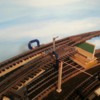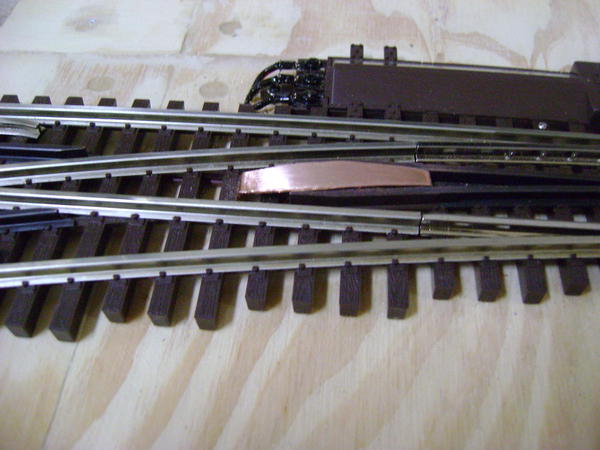I bought these switches from Ross and had them wire them. I am not saying there is anything wrong with them. I just need to know how to alleviate a situation that is occurring in my switching yard.
See the picture for the point at which the locomotive loses power. It stops dead. It is not a very big dead spot as if I have some momentum I can power through it. However as it will be a switching yard I have to go slow at this point and thus the problem.
I am wondering if I can install a jumper wire or power wire somewhere to fix this. So far everything I have tried has made no difference.
It seems worse in reverse. Reverse is going towards the can of wire nuts.
I realize it can be roller spacing on each locomotive. But is there some way to ensure power all the way through both switches?
















